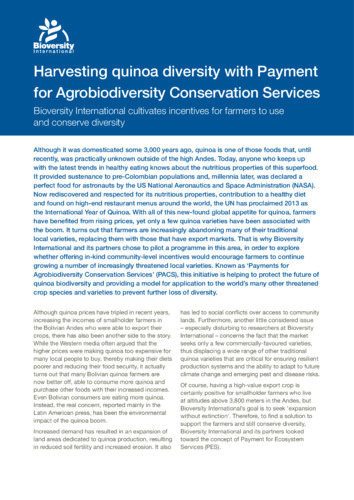Harvesting quinoa diversity with Payment for Agrobiodiversity Conservation Services: Bioversity International cultivates incentives for farmers to use and conserve diversity)
Although it was domesticated some 3,000 years ago, quinoa is one of those foods that, until recently, was practically unknown outside of the high Andes. Today, anyone who keeps up with the latest trends in healthy eating knows about the nutritious properties of this superfood. It provided sustenance to pre-Colombian populations and, millennia later, was declared a perfect food for astronauts by the US National Aeronautics and Space Administration (NASA). Now rediscovered and respected for its nutritious properties, contribution to a healthy diet and found on high-end restaurant menus around the world, the UN has proclaimed 2013 as the International Year of Quinoa. With all of this new-found global appetite for quinoa, farmers have benefited from rising prices, yet only a few quinoa varieties have been associated with the boom. It turns out that farmers are increasingly abandoning many of their traditional local varieties, replacing them with those that have export markets. That is why Bioversity International and its partners chose to pilot a programme in this area, in order to explore whether offering in-kind community-level incentives would encourage farmers to continue growing a number of increasingly threatened local varieties. Known as ‘Payments for Agrobiodiversity Conservation Services’ (PACS), this initiative is helping to protect the future of quinoa biodiversity and providing a model for application to the world’s many other threatened crop species and varieties to prevent further loss of diversity.

